Eared Grebes are the most abundant grebe on the planet and immediately after the breeding season most of the population on this continent migrates to either Mono Lake, California or the Great Salt Lake in my back yard where they feed on brine shrimp and brine flies.

1/800, f/7.1, ISO 500, 500 f/4, 1.4 tc
Most of the grebes that I see are on the Great Salt Lake where it’s difficult to get quite close enough to them for photography purposes but occasionally I’ve seen them on smaller ponds where they’re attracted by insect hatches.

1/400, f/8, ISO 500, 500 f/4, 1.4 tc
The eye of this species is incredibly red, almost unbelievably so. Just to be clear, I’ve not applied any saturation to these photos.
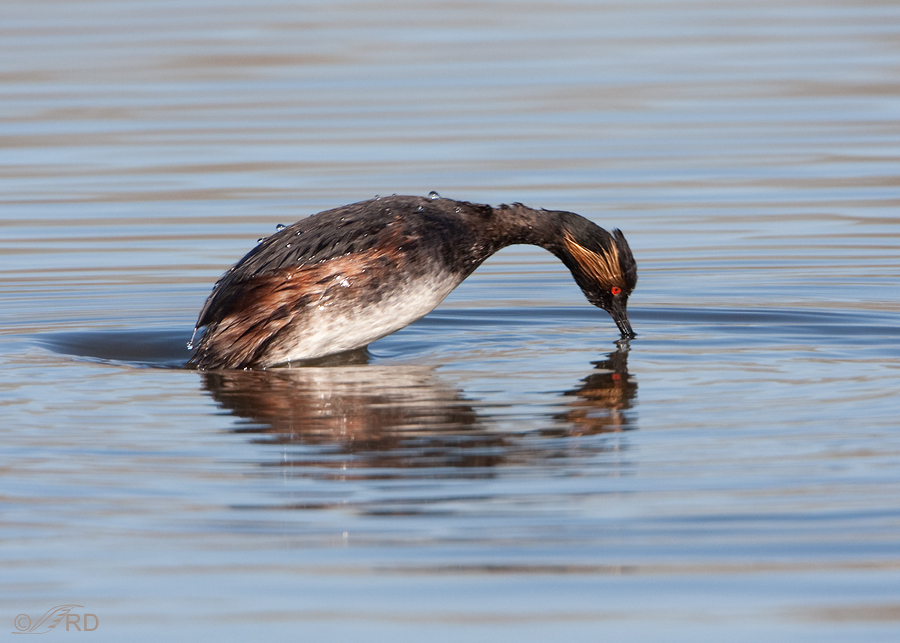
1/800, f/7.1, ISO 500, 500 f/4, 1.4 tc
These birds are tireless feeders and divers. In scientific studies it’s estimated that they consume between 8,000 and 70,000 brine shrimp per day. That’s a lot of diving!

1/1600, f/8, ISO 500, 400 f/4, 1.4 tc
When there’s an insect hatch they feed on the surface and as they scurry from bug to bug they’re very difficult to follow because of their quick turns and amazing swimming speed – it can be almost as challenging for the photographer as photographing small birds in flight. Here the grebe has spotted a floating midge on the left…
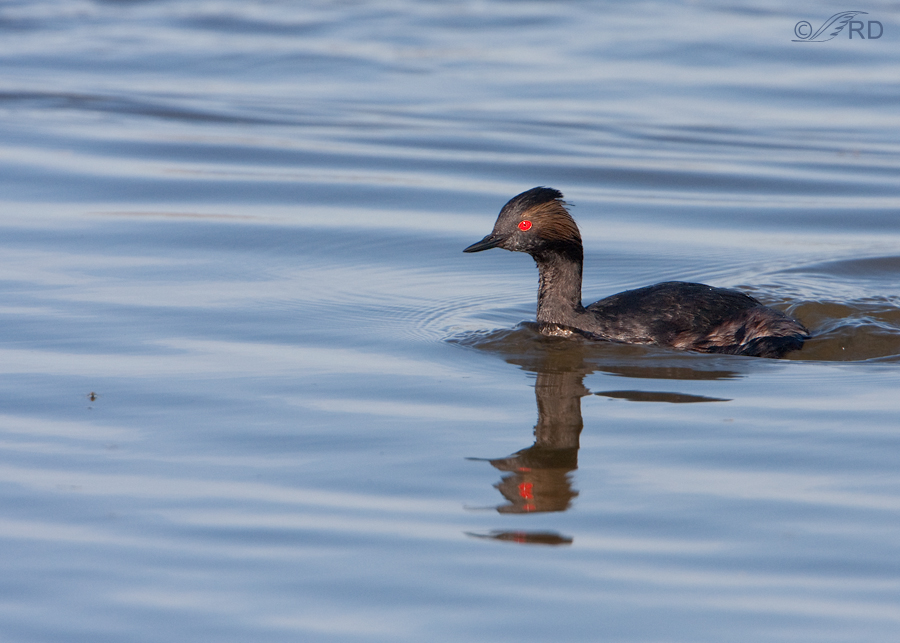 1/1600, f/8, ISO 400, 500 f/4, 1.4 tc
1/1600, f/8, ISO 400, 500 f/4, 1.4 tc
approaches the midge very quickly…
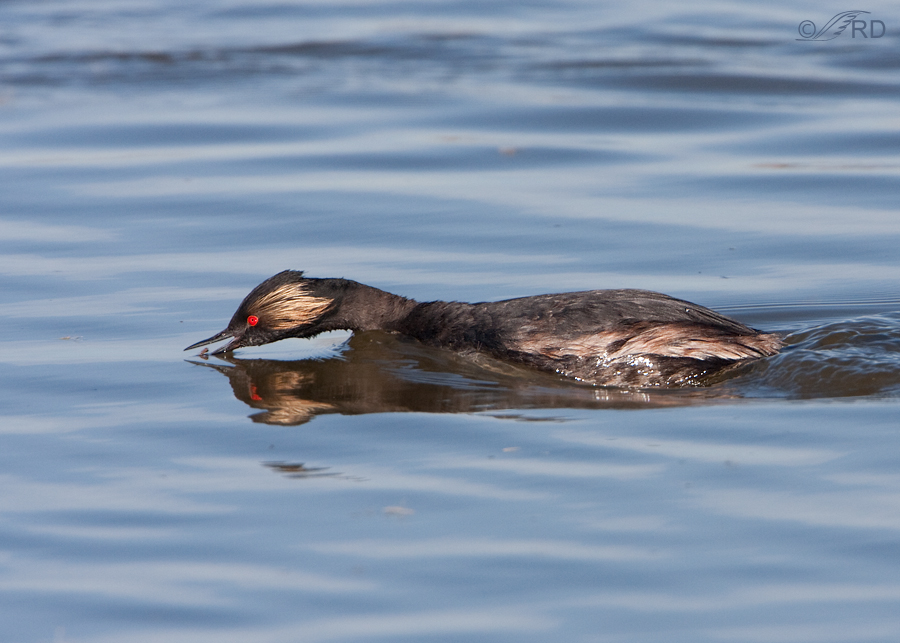
1/1600, f/8, ISO 400, 500 f/4, 1.4 tc
and snags it. These three shots were sequential in a quick burst which should give some idea of how fast they are when feeding. They zig and zag in every direction so they’re quite difficult to follow with a long lens.
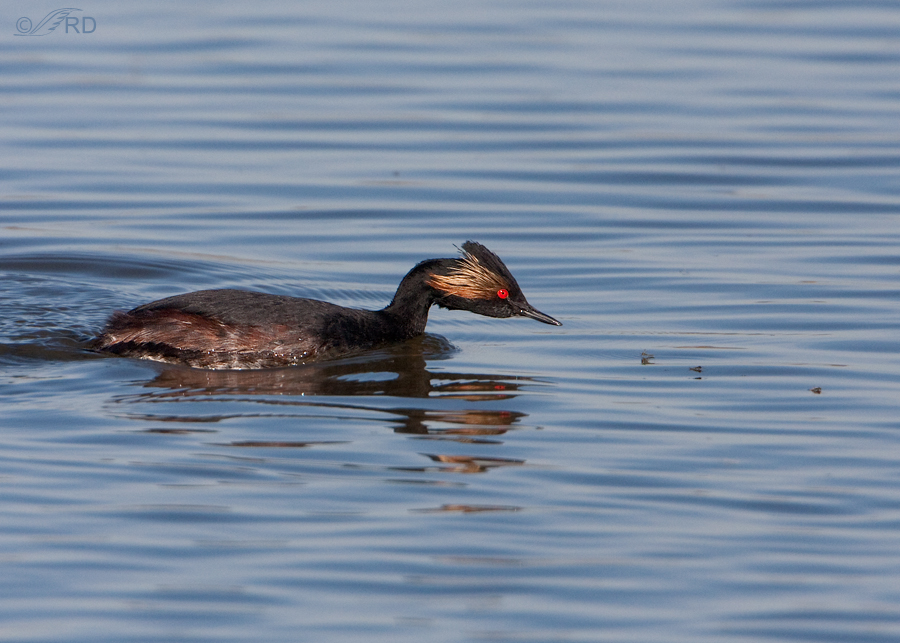
1/3200, f/8, ISO 400, 500 f/4, 1.4 tc
This grebe gobbled up all three midges in the blink of an eye.
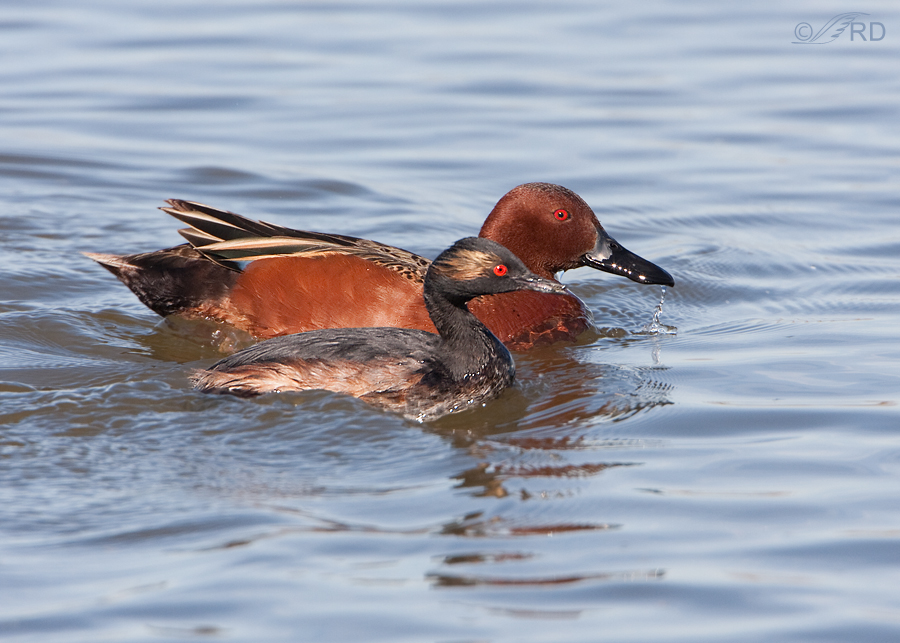
1/800, f/8, ISO 400, 500 f/4, 1.4 tc
I wish I’d had more depth of field for this shot as the grebe is a little soft but I include the image to show size. Cinnamon Teals are small ducks – not much more than 1/3 the size (by weight) of a Mallard but here you see that the teal dwarfs the grebe.
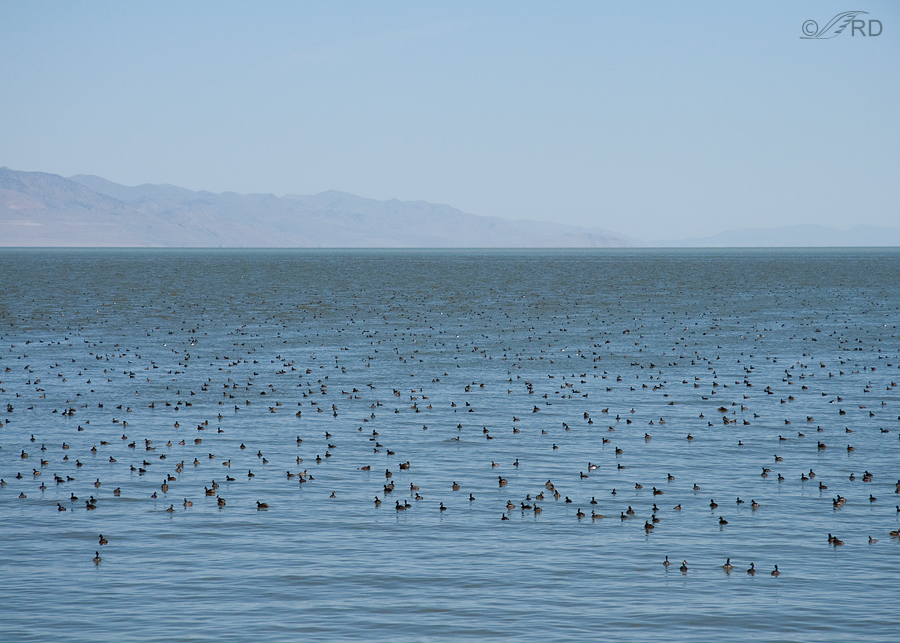
The numbers of Eared Grebes on the Great Salt Lake at certain times of the year can be simply mind-boggling. I took this shot about three weeks ago (5/7/12) along the Antelope Island Causeway. As you can see the grebes were thick from the causeway edge just below the bottom of the frame to roughly a half mile out into the lake. And there were just as many birds for most of the 7 mile length of the causeway. Who knows how many more grebes there were on the 10,000 (not a typo) miles of shoreline of the lake.
Ron
Note: For me, the biology of the Eared Grebe is one of the most interesting in the entire world of birds so I can’t resist including the following paragraph taken from The Birds of North America Online (BNA). It will likely be more reading than some want to do so I include it as an addendum.
“While at fall molting/staging lakes, adults more than double their arrival mass and allow the pectoral muscles to atrophy below a size that allows flight. Then, during a hyperphagic period, they greatly increase the size of the organs involved in digestion and food storage. These changes in size and proportions—the most extreme yet known for any bird—are then reversed during a brief predeparture period, when the birds catabolize much of their just-deposited fat, increase heart size, and reduce digestive organ mass to perhaps 25% of peak in preparation for a nonstop flight to wintering areas. The function of the predeparture events is to reduce wing-loading while maximizing flight range and performance. Migration occurs shortly after food supplies run out, typically in December–January. As a result, the Eared Grebe is the latest of the North American migrants to move to its winter stations. Because a similar atrophy/hypertrophy cycle is repeated 3–6 times each year, the Eared Grebe has the longest flightless period of any volant bird in the world, perhaps totaling 9–10 months over the course of a year. At fall staging areas alone, flightless periods average 3–4 months for adults and may reach 8 months or more in nonbreeders.”


Beautiful and fascinating!
As always, very informative and combined with great photography. Thank you for sharing your good knowledge.
Thanks very much Andreas.
Thank you Bob, Mike, Tana and Rohn. Sometimes I can’t resist reverting to my old biology teacher mode and I’m delighted that each of you appreciated the information I presented here about this fascinating species.
Amazing
This morning, I had 10 on a pond I built on a clients property. I get them every spring for a few days. They raft like coots do in the winter up here.
Once again: Wow! I love your pictures and the information you provide along with them. Thank you.
Utterly fascinating. Had no idea.
Thank you for a very informative post about the Eared Grebes. Gee, I think it’s great to see 5 or 6 at a time here, and you see that impressive mass of them up there. But I would guess they my 5 or 6 are probably somewhere in that crowd. 🙂